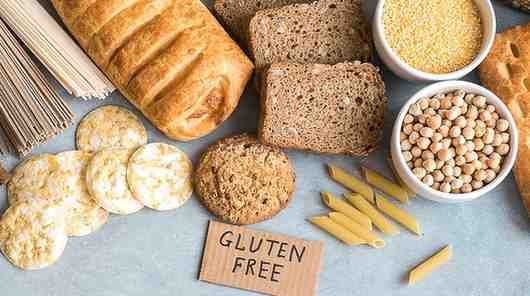High Protein Diet for Diabetes: What to Eat and How Much
Introduction
Living with diabetes often means rethinking what’s on your plate. Carbs take center stage in blood sugar conversations, but protein is like the quiet superhero in the background—it stabilizes, sustains, and strengthens. For people with diabetes, a high protein diet can do more than just fuel the body; it can help manage blood sugar, support weight control, and promote long-term health.
But what exactly does a high-protein diet for diabetes look like? How much protein is too much—or not enough? And which protein sources give you the best bang for your blood sugar buck?
Let’s dive deep into the science, the food choices, and the portion strategies to understand how to build a protein-powered plan for diabetes management.
Why Protein Matters in Diabetes
Protein and Blood Sugar Stability
Unlike carbohydrates, protein has a minimal effect on blood sugar levels. When you eat carbs, your body breaks them down into glucose, causing a rise in blood sugar. Protein, on the other hand, is digested more slowly and converted into glucose only in small amounts and over several hours. This is why a high protein diet diabetes approach can act as a stabilizer in meals, helping to keep blood sugar more balanced throughout the day.
Satiety and Weight Management
Protein helps you feel full longer. For people with type 2 diabetes—where weight management is often part of the treatment plan—this is a game changer. By reducing hunger pangs and curbing overeating, protein helps keep calorie intake under control.
Muscle Maintenance
Diabetes can increase the risk of muscle loss over time (especially if blood sugars are poorly controlled). Protein intake helps preserve lean muscle mass, which is vital not only for strength but also for metabolism and insulin sensitivity.
Kidney Health Concerns
You might’ve heard that high protein diets can harm the kidneys. This is partially true—for people with advanced kidney disease. However, for most people with diabetes and normal kidney function, moderate to high protein intake is safe. Still, it’s important to consult with a healthcare professional before making drastic dietary changes.
How Much Protein Do People with Diabetes Need?
General Guidelines
For the average adult, the recommended dietary allowance (RDA) is 0.8 grams of protein per kilogram of body weight per day. For someone weighing 70 kg (154 lbs), that’s about 56 grams per day.
But for people with diabetes, studies suggest that slightly higher intakes—1.0 to 1.5 g/kg/day—may offer benefits like improved blood sugar control and weight management.
Practical Example
- A 70 kg (154 lb) individual:
- Standard RDA: 56 g/day
- High protein target: 70–105 g/day
Distribution Throughout the Day
Protein works best when spread evenly across meals. Instead of eating a giant steak at dinner, try to include protein at every meal and snack. This helps balance blood sugar throughout the day and prevents energy crashes.
Best Protein Sources for Diabetes
Not all proteins are created equal. The key is choosing lean, nutrient-dense options that don’t overload you with unhealthy fats or hidden carbs. Let’s break it down:
1. Animal-Based Proteins
Lean Meats
- Chicken breast
- Turkey
- Lean beef cuts (sirloin, tenderloin)
- Pork loin
These are rich in high-quality protein with little to no carbohydrate.
Fish and Seafood
- Fatty fish (salmon, mackerel, sardines) – packed with omega-3 fatty acids, which support heart health.
- Lean fish (cod, tilapia, shrimp) – low in fat, still rich in protein.
Eggs
Eggs are a powerhouse: affordable, versatile, and nutrient-dense. The whites are pure protein, while the yolk adds healthy fats and vitamins.
Dairy
- Greek yogurt (unsweetened) – double the protein of regular yogurt.
- Cottage cheese – great for snacks or breakfast.
- Cheese – in moderation, preferably reduced-fat versions.
2. Plant-Based Proteins
Legumes
- Lentils, chickpeas, black beans, kidney beans
- Rich in protein, fiber, and slow-digesting carbs.
- The fiber helps blunt blood sugar spikes.
Soy Products
- Tofu, tempeh, edamame – excellent meat alternatives, complete proteins, and low in carbs.
Nuts and Seeds
- Almonds, walnuts, chia seeds, flaxseeds, pumpkin seeds
- Provide protein, fiber, and healthy fats.
- Perfect for snacks, but watch portion sizes due to calorie density.
Whole Grains
- Quinoa, farro, bulgur – contain more protein than most grains and are diabetic-friendly in moderation.
What to Eat: High-Protein Meal Ideas
Breakfast
- Veggie omelet with spinach, peppers, and feta
- Greek yogurt parfait with chia seeds and blueberries
- Protein smoothie (unsweetened almond milk, whey or pea protein, frozen berries, almond butter)
- Cottage cheese bowl with sliced cucumber, tomatoes, and herbs
- Tofu scramble with mushrooms and turmeric
Lunch
- Grilled chicken salad with leafy greens, avocado, and a light vinaigrette
- Turkey and hummus wrap (whole grain tortilla)
- Lentil soup with a side of cottage cheese
Dinner
- Salmon with roasted vegetables and quinoa
- Stir-fried tofu with broccoli and bell peppers
- Lean beef chili with kidney beans
Snacks
- Hard-boiled eggs
- Handful of almonds or walnuts
- String cheese
- Roasted chickpeas
- Protein shake
High Protein Diet for Diabetes Recipes
Here are some practical recipes you can rotate into your weekly meals:
1. Lentil and Spinach Soup
- 1 cup cooked lentils
- 2 cups fresh spinach
- Garlic, onion, cumin, black pepper
- Vegetable broth
- Finish with a squeeze of lemon
Packed with protein, fiber, and iron—great for lunch or dinner.
2. Salmon and Quinoa Bowl
- 4 oz baked salmon
- ½ cup cooked quinoa
- Steamed broccoli and zucchini
- Olive oil + lemon dressing
Balances protein, omega-3 fats, and low-glycemic carbs.
3. Tofu Stir-Fry
- Extra-firm tofu cubes, pan-fried
- Bell peppers, broccoli, and snow peas
- Soy sauce, garlic, ginger
- Serve with cauliflower rice
A plant-based, high-protein dinner.
4. Turkey Chili
- Lean ground turkey
- Kidney beans and black beans
- Diced tomatoes and peppers
- Chili powder, cumin, paprika
Perfect for batch cooking.
5. Egg Muffins
- Whisked eggs + chopped spinach + diced turkey breast
- Bake in muffin tins until firm
- Store in fridge for grab-and-go breakfasts
High Protein Diet for Diabetes Meal Plan (7-Day Sample)
Here’s a diabetes-friendly high-protein meal plan to help you visualize how to eat across the week.
Day 1
- Breakfast: Scrambled eggs + avocado + whole-grain toast
- Lunch: Grilled chicken salad with mixed greens
- Dinner: Salmon with quinoa and steamed broccoli
- Snack: Cottage cheese with cucumber slices
Day 2
- Breakfast: Greek yogurt + chia seeds + walnuts
- Lunch: Lentil soup + roasted vegetables
- Dinner: Lean beef stir-fry with peppers and cauliflower rice
- Snack: Boiled eggs
Day 3
- Breakfast: Protein smoothie (whey, almond milk, peanut butter)
- Lunch: Turkey wrap (whole grain tortilla + hummus + spinach)
- Dinner: Baked cod with asparagus and mashed cauliflower
- Snack: Almonds (small handful)
Day 4
- Breakfast: Cottage cheese + berries + flaxseeds
- Lunch: Quinoa and black bean bowl
- Dinner: Grilled chicken + roasted Brussels sprouts + sweet potato
- Snack: String cheese
Day 5
- Breakfast: Omelet with mushrooms and cheese
- Lunch: Tofu stir-fry with broccoli and zucchini
- Dinner: Turkey chili with kidney beans
- Snack: Edamame
Day 6
- Breakfast: Egg muffins with spinach and turkey
- Lunch: Grilled shrimp salad with avocado
- Dinner: Lean pork loin + roasted cauliflower + green beans
- Snack: Greek yogurt
Day 7
- Breakfast: Smoked salmon + scrambled eggs + spinach
- Lunch: Lentil and chickpea salad with olive oil dressing
- Dinner: Grilled chicken with sautéed kale and brown rice
- Snack: Walnuts
How Much Is Too Much?
Risks of Overdoing Protein
- Kidney strain: If you already have diabetic kidney disease, too much protein can worsen the condition.
- Nutrient imbalance: Overemphasis on protein can sometimes lead to low fiber intake if carbs are too restricted.
- Calorie overload: Some protein-rich foods are high in fat and calories (like cheese, nuts, and fatty meats). Overeating them can lead to weight gain.
The Balance
The goal isn’t to eat only protein—it’s to find the right balance between protein, healthy fats, and complex carbohydrates. A well-rounded diabetes-friendly plate might look like this:
- ¼ plate protein (lean meat, tofu, legumes)
- ¼ plate whole grains or starchy veggies (quinoa, sweet potato)
- ½ plate non-starchy vegetables (spinach, zucchini, broccoli)
Protein and Special Considerations
Type 1 vs. Type 2 Diabetes
- Type 1 diabetes: Protein still helps with satiety and blood sugar control, but insulin dosing should account for delayed glucose release from protein.
- Type 2 diabetes: Higher protein intake is particularly beneficial for weight management and improving insulin resistance.
Older Adults with Diabetes
Protein needs often increase with age to prevent muscle loss. For older adults with diabetes, aiming toward the higher end (1.2–1.5 g/kg/day) can be very beneficial.
Athletes with Diabetes
For active individuals, protein is essential for recovery. Needs can go even higher—up to 1.6–2.0 g/kg/day—depending on training intensity.
Practical Tips for Adding More Protein
- Start the day with protein – instead of a bagel or cereal, go for eggs, yogurt, or a shake.
- Snack smart – swap chips or crackers for cheese sticks, nuts, or boiled eggs.
- Upgrade your carbs – choose protein-rich grains like quinoa or add lentils to rice dishes.
- Double up on legumes – mix chickpeas into salads, soups, or even roasted snacks.
- Consider protein powders – whey, pea, or soy protein can be convenient for busy lifestyles.
Debunking Myths About Protein and Diabetes
- “Protein is bad for kidneys.”
➝ Only true for people with existing kidney disease. - “High protein means no carbs.”
➝ Not true! It means balancing protein with smart carb choices. - “You need meat to get enough protein.”
➝ Plant-based eaters can absolutely meet their needs with beans, tofu, nuts, and grains.
Of course. Here are comprehensive, evidence-based answers to each of your FAQs on a high-protein diet for diabetes.
Important Disclaimer:
This information is for educational purposes only and is not a substitute for professional medical advice, diagnosis, or treatment. Always seek the advice of your physician or a qualified healthcare provider with any questions you may have regarding a medical condition. Do not disregard professional medical advice or delay in seeking it because of something you have read here. Individual nutritional needs vary, especially with diabetes and kidney function.
FAQ’s Protein Diet for Diabetes
1. Can a high protein diet reverse type 2 diabetes?
While not a “cure” or a guaranteed method for full “reversal,” a high-protein diet, particularly when combined with low carbohydrates and healthy fats, can be a powerful tool for achieving remission.
- Remission is typically defined as having normal blood sugar levels (an HbA1c below 6.5%) for at least three months without the use of diabetes medication.
- How it helps: A high-protein diet aids in significant weight loss by increasing satiety (feeling full) and preserving muscle mass during calorie restriction. Weight loss, especially loss of visceral fat, dramatically improves insulin sensitivity. When the body responds better to insulin, blood sugar levels normalize.
- Conclusion: For many individuals, adopting a high-protein, whole-foods-based diet can lead to such improved metabolic health that they no longer require medication and their blood sugar tests are in a non-diabetic range. This is often considered a reversal or remission, but maintaining it requires long-term dietary consistency.
2. How much protein should a diabetic eat per day?
There isn’t a one-size-fits-all number, as it depends on age, sex, activity level, and kidney function. However, general guidelines for diabetics without kidney disease are:
- Standard Recommendation: 1.0 to 1.5 grams of protein per kilogram of body weight (0.45 to 0.68 grams per pound) per day.
- For Example: A 90 kg (200 lb) person would aim for 90 – 135 grams of protein daily.
- Calculation:
- Take your weight in pounds: 200 lbs.
- Multiply by 0.45: 200 * 0.45 = 90 grams (minimum).
- Multiply by 0.68: 200 * 0.68 = 136 grams (maximum).
- Distribution: It’s best to spread this intake evenly throughout the day (e.g., 25-35 grams per meal) to maximize muscle protein synthesis and manage hunger and blood sugar levels.
Always consult a doctor or dietitian to determine the right amount for you, especially if you have any kidney complications.
3. Does protein spike blood sugar?
Protein has a minimal direct effect on blood sugar, especially when compared to carbohydrates. However, it can have an indirect effect.
- No Significant Spike: Pure protein does not convert into glucose quickly. It can cause a very slow and slight rise in blood glucose over several hours, which is often not noticeable.
- The Indirect Effect: When consumed with carbohydrates, protein can slow down the digestion of those carbs, leading to a slower, more gradual rise in blood sugar instead of a sharp spike. This is generally beneficial.
- Gluconeogenesis: The body can convert protein to glucose through a process called gluconeogenesis, but this is a demand-driven process, not a supply-driven one. It primarily occurs when carbohydrate intake is very low and the body needs glucose, not simply because you ate a lot of protein.
4. What are the best high protein breakfasts for diabetics?
Breaking a fast with a high-protein, low-carb breakfast is crucial for stabilizing blood sugar all morning. Excellent options include:
- Eggs: Scrambled, boiled, or in an omelet loaded with spinach, mushrooms, and a small amount of cheese.
- Greek Yogurt: Full-fat, plain Greek yogurt with a handful of berries and a sprinkle of nuts or chia seeds.
- Cottage Cheese: With sliced peaches (in moderation) or cherry tomatoes and black pepper.
- Protein Smoothie: Unsweetened almond milk, a scoop of low-carb protein powder, a tablespoon of nut butter, and a handful of spinach.
- Smoked Salmon: With cream cheese on a small slice of whole-grain toast or cucumber slices.
- Tofu Scramble: A plant-based alternative to scrambled eggs, seasoned with turmeric and black salt.
5. Are protein shakes safe for diabetics?
Yes, but you must choose carefully. Protein shakes can be a convenient way to meet protein goals.
- What to Look For:
- Low Sugar: Ideally less than 5g of sugar per serving.
- Low Carb: Less than 10g of total carbohydrates.
- High Protein: At least 15-20g per serving.
- Quality Protein: Whey protein isolate, pea protein, or hemp protein are excellent choices. Whey isolate is very low in lactose (carbs).
- What to Avoid: Shakes loaded with sugar, sugary syrups, or high-carb fruit additions.
- Tip: Always have a protein shake with a small amount of healthy fat (like a tablespoon of almond butter) to further slow absorption and improve satiety.
6. Is a high protein diet bad for diabetic kidneys?
This is a critical concern. For individuals with normal kidney function, a high-protein diet is generally considered safe and does not cause kidney damage.
- The Caveat: For those with existing kidney disease (nephropathy), a high-protein diet can put additional strain on the kidneys and may worsen the condition. Diabetics are at a higher risk for kidney disease.
- The Verdict: It is essential to get your kidney function tested (through a blood test for eGFR and a urine test for albumin) before significantly increasing your protein intake. If your kidneys are healthy, a high-protein diet is likely safe. If you have any signs of kidney impairment, you must work with your doctor and dietitian to determine a safe level of protein intake, which is often moderate, not high.
7. What are the best plant-based proteins for diabetics?
Plant-based proteins are fantastic as they come packaged with fiber, which helps manage blood sugar.
- Legumes: Lentils, chickpeas, black beans, and kidney beans (watch portions as they also contain carbs).
- Tofu and Tempeh: Versatile, low-carb, and complete sources of protein.
- Edamame: Young soybeans, great as a snack or in salads.
- Nuts and Seeds: Almonds, walnuts, chia seeds, hemp seeds, and pumpkin seeds.
- Seitan: A high-protein meat substitute made from wheat gluten (not suitable for those with celiac disease or gluten sensitivity).
- Certain Whole Grains: Quinoa and amaranth are unique as they are complete proteins.
8. Can I eat eggs if I have type 2 diabetes?
Absolutely. Eggs are an excellent food for diabetics.
- Why They’re Great: They are a perfect source of high-quality protein, healthy fats, and essential vitamins and minerals. The protein and fat help with satiety and blood sugar control.
- The Cholesterol Myth: For most people, dietary cholesterol (from eggs) has a much smaller effect on blood cholesterol levels than previously believed. The greater concerns for heart health are trans fats and saturated fats from processed foods.
- Recommendation: Most current research shows that eating 6-12 eggs per week is perfectly safe for individuals with diabetes as part of a balanced diet. Focus on cooking them healthily (e.g., boiled, poached, or scrambled with minimal oil).
9. What is a sample high protein meal plan for diabetics?
Here is a simple one-day sample plan (~1,500 calories, macros are estimates):
- Breakfast (~35g protein): 3-egg omelet with 1 oz cheddar cheese and spinach. Side of ½ cup blackberries.
- Lunch (~40g protein): 5 oz grilled chicken breast on a large salad with mixed greens, cucumbers, peppers, and ¼ cup chickpeas. Dressing of olive oil and vinegar.
- Snack (~15g protein): 1 cup plain Greek yogurt with 1 tbsp slivered almonds.
- Dinner (~45g protein): 6 oz baked salmon with 1 cup roasted asparagus and a ½ cup quinoa.
- Total Protein: ~135 grams
10. How do you calculate protein needs for prediabetes?
The calculation is the same as for type 2 diabetes, as the goal is to improve insulin sensitivity and prevent progression.
- Use the same formula: 1.0 to 1.5 grams of protein per kilogram of body weight.
- Example for Prediabetes: A 110 kg (240 lb) person would aim for 110 – 165 grams of protein per day.
- 240 lbs * 0.45 = 108 g (min)
- 240 lbs * 0.68 = 163 g (max)
- Focus: Combining this protein intake with strength training is exceptionally effective for prediabetes, as it builds muscle, which is a major site for glucose disposal and improves metabolic health.
Conclusion
A high-protein diet can be a powerful ally in managing diabetes. By stabilizing blood sugar, reducing cravings, supporting muscle health, and aiding weight control, protein plays a starring role in a balanced diabetic-friendly meal plan.
The sweet spot? About 1.0–1.5 g of protein per kilogram of body weight per day, distributed across meals and snacks, with a mix of animal and plant-based sources.
Whether you’re enjoying grilled salmon, a hearty lentil soup, or a handful of almonds, remember that every bite of protein is helping you build a stronger, more balanced body—and keeping diabetes in check one meal at a time.
High protein breakfasts aren’t just good for your body—they also stabilize mood and energy, reducing anxiety crashes later in the day. Learn more in our Mental Health section.
Did you know that what you eat in the morning can affect sleep quality at night? A balanced breakfast supports stable circadian rhythms—discover more in our Sleep Health articles.
For more tips and support, visit our Facebook page.







